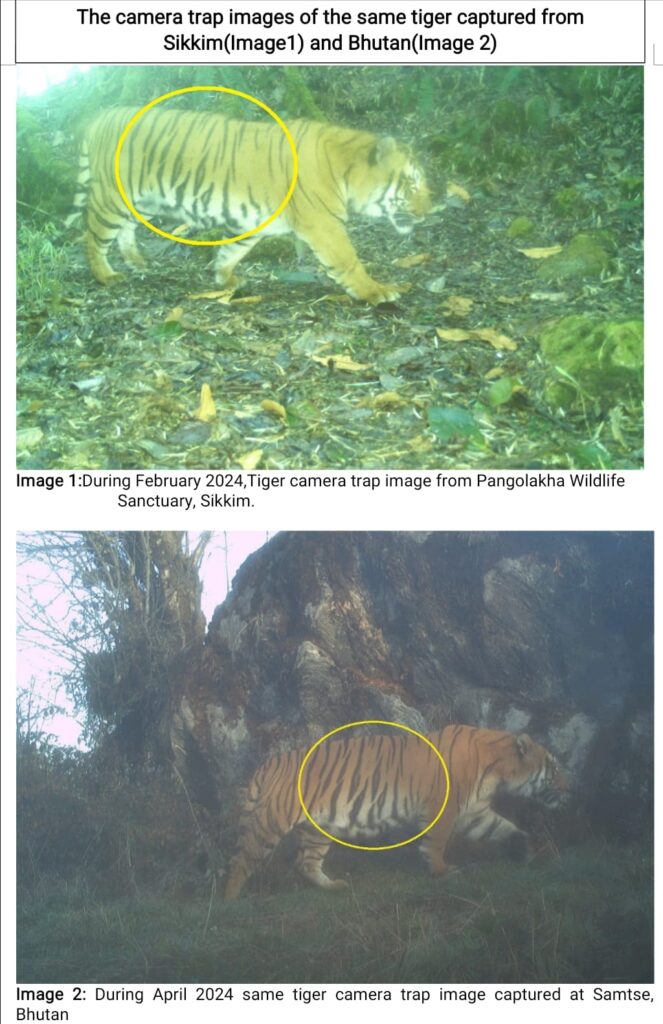The Forest and Environment Department of Sikkim has marked a significant achievement in wildlife conservation by enabling tiger movement between Sikkim, India, and Bhutan. This accomplishment underscores the importance of sustainable ecosystem management and transboundary conservation efforts in the region.
Pangolakha Wildlife Sanctuary: A Vital Corridor
Established in 2002, Pangolakha Wildlife Sanctuary in Pakyong district, Sikkim, covers an area of 128 square kilometers. This sanctuary serves as a crucial corridor for wildlife, especially tigers, facilitating their movement between India and Bhutan. Between 2018 and 2024, camera traps installed in Sikkim’s high-altitude regions, in collaboration with the Wildlife Institute of India, documented three tigers in the sanctuary. This places Sikkim on the national Tiger Conservation map, highlighting the sanctuary’s significant role in tiger conservation.
International Collaboration and Findings
In 2024, camera trap images confirmed tiger movement from Pangolakha Wildlife Sanctuary to Samtse district, Bhutan. This discovery validates the presence of essential wildlife corridors between the two countries. The findings were presented at an international workshop on “Countering Wildlife Trafficking” held from June 11-13, 2024, under the South Asia Wildlife Enforcement Network (SAWEN) hosted by Bhutan. The workshop saw participation from officials across South Asian countries.

During the workshop, Sikkim’s Divisional Forest Officer, East Wildlife Division, Ms. Sonam Norden Bhutia, and Bhutanese Forest officials agreed to share camera trap images for comparative analysis. This collaboration led to a remarkable discovery: the distinctive stripe patterns of one tiger matched those recorded in both Sikkim and Bhutan, as confirmed by the Wildlife Institute of India.
Also Read: Prem Pradhan Honored with the 27th Dr. Shobha Kanti Thegim Lepcha Memorial Award – 2024
This finding highlights the importance of protecting transboundary wildlife corridors and demonstrates the success of conservation efforts in Sikkim and Bhutan. The movement of tigers across borders reflects the effectiveness of habitat preservation and restoration efforts, showcasing the resilience and health of Sikkim’s ecosystem.
Future Conservation Initiatives
Looking ahead, the Sikkim Forest and Environment Department remains committed to enhancing conservation efforts. Plans include scaling up monitoring, strengthening law enforcement, and involving local communities. These initiatives aim to ensure the long-term survival of tiger populations, promising a brighter future for wildlife conservation across borders.

